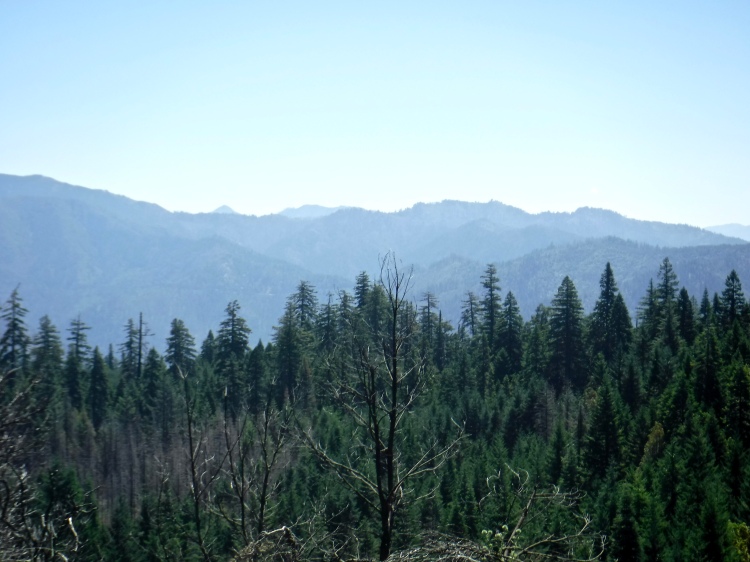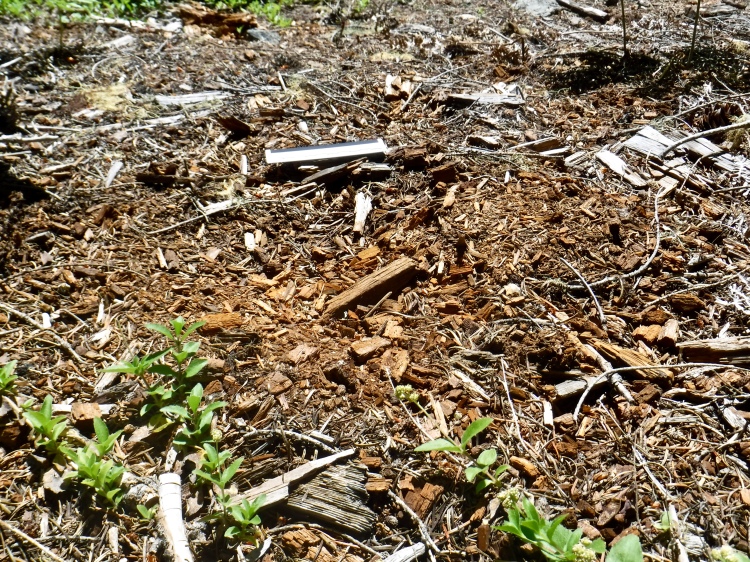
Now that my thesis is complete, which I will share as soon as I can, I am able to revisit old posts ideas that I could not work on before. In July of 2017, I attended a mountain lion (Puma concolor) tracking workshop in Humboldt County, California that was hosted by Phil Johnston: an expert tracker and biologist.
As with all the tracking workshops hosted by the HSU Natural History Museum, this excursion took place on a Saturday. The workshop attendees and I met early in the morning in front of the museum, where Phil gave us a run-down of his plans. We then piled into vehicles and began heading for Humboldt County’s mountainous interior.
We drove for at least an hour, past the town of Willow Creek, and into the Six Rivers National Forest. Here we started to climb, as the road narrowed and wound around the mountains. At one point, after the road had become considerably wooded, we stopped.

Phil got out of his truck and held a radio telemetry receiver aloft: listening for the distinctive pinging noise that would have indicated the presence of one of the mountain lions he was studying. Scientists often attach radio or GPS collars to elusive animals like big cats, so that they can gather data about the creatures’ movements.
Phil listened to the receiver for a few minutes, and then we began our hike. We walked along a dirt road in the warm sunlight – a welcomed change from the damp chill of the coast – and looked for tracks.
Before long, Phil located a set of black bear (Ursus americanus) prints: the first of many. Phil was constantly teaching as we walked, pointing out anything that caught his eye. These were interactive and engaging conversations, as Phil often quizzed us and made us think.

The road was full of deer prints, which you can see better if you click on this picture to enlarge the file. 
One of the many black bear tracks we encountered on July 15, 2017. 
The bear print again, with a ruler next to it. As you can see, I was not the only person taking pictures that day. 
A pile of scat from a small black bear. This was our hardest quiz of the day; no one could guess which animal left this scat! 
A snake track that we encountered early during the tracking workshop.
We continued on, pausing frequently to examine tracks, before eventually turning left and leaving the road. We crossed a sun-kissed meadow and made for a stand of large conifer trees – having to be mindful of the uneven terrain. Mountain vistas now became easier to glimpse, creating stunning views.
We crossed a large meadow, rested for a bit on a log, and then began to descend a densely-wooded slope. The gradient was steep and the topsoil loose, so I turned sideways to counter the pull of gravity. Eventually we returned to the level road, where Phil immediately spotted a set of coyote (Canis latrans) prints. We turned to follow the road, and a grouse fled our approach and hid in a dense thicket.
After a few minutes we arrived at the spot Phil had been leading us towards: a patch of wood chips that contained mountain lion scat and scrapes. Solitary cats like mountain lions communicate with one another in many ways, with one of the more visual methods being “scraping;” the felines dig out shallow depressions in the ground with their paws, potentially depositing scent as they do so. Sometimes, as was the case here, cats urinate or defecate in scrapes. This scraping behavior helps mountain lions and other felids (cats) to delineate their territories and to advertise their social and reproductive statuses (Harmsen, Foster, Gutierrez, Marin, & Doncaster, 2010).
Once we had finished examining the scraping site, we returned to our cars and drove deeper into the mountains. Here the road became a bit dicey, with repeated dips, climbs, and places for vehicles with poor ground clearance to bottom out. But all of our cars survived, and made it to a turn-off on our right where we could safely park.
The views here were spectacular. The mountains stretched to the horizon in all directions, and the mosaic of burnt and healthy conifers created a beautiful patchwork of greens and browns – there was even a dash of white snow in the distance. We walked along this upper portion of the road for several minutes, drenched in the unbroken sunlight, while our eyes scanned for tracks. We did locate one old set of mountain lion prints, but my cheap camera could not capture them.
Before long we turned around and headed back to our vehicles, so that we could begin the winding drive down the mountains. We made one brief stop at a small, grassy clearing where Phil knew that a mother mountain lion with cubs had recently been. The workshop attendees and I searched for some time, but the hard ground revealed no signs of their presence. We thus got back in our cars and embarked on the long trip back Arcata, California.
Closing Thoughts
The tracking workshop on July 15, 2017 stands out as a high point in my time in California. I had meant to attend more tracking workshops, but the last year of my master’s program turned out to be much busier than I had anticipated. I am extremely grateful to Phil for leading the hike and sharing his knowledge, and to the HSU Natural History Museum for hosting the event.












Seems it was amazing and exciting workshop. The view is amazing. I love mountains. I am so glad to hear that you finished your thesis Luck dear Josh, and do you know, to follow your voyage on the way of your future, makes me excited… Thank you, Love, nia
LikeLike
Oh wow!!!
What a lovely post…and congratulations on finishing your thesis
LikeLiked by 1 person
Thank you, and thank you! I’m glad you like the post :)
LikeLiked by 1 person
Amazing experience, Josh. I like the way you told this story, too. I can clearly picture out the landscape in my mind. And a huge congratulations on completing your thesis. <3
LikeLiked by 1 person
Thanks Mitch, I’m glad you liked the post :)
LikeLike
Superb post Josh, and even better news you have finally finished your thesis – way to go buddy :)
LikeLiked by 1 person
Thanks Rory! I’ll be stopping by your blog soon :)
LikeLiked by 1 person
You passion for wildlife is just brilliant. I am amazed by you and your sincerity!
LikeLiked by 1 person
Thank you! The best part is that there are people who are much more passionate than me, and that are helping wildlife much more directly than I am.
LikeLiked by 1 person
Drops make up the mighty ocean :)
LikeLiked by 1 person
Very true!
LikeLike
Congratulations on finishing your thesis.
The view is so superb and what an exciting workshop.
LikeLiked by 1 person
Thank you, Naila! I hope you get to experience mountain vistas like this in person one day!
LikeLiked by 1 person
Always a pleasure Josh 😊
I’m bound to wonder about & hopefully get there eventually.
LikeLiked by 1 person
Thank you for sharing such an amazing experience Josh. I love to learn and understand how those on the front lines of wildlife tracking and conservation are able to know their habits and behaviors/
LikeLiked by 1 person
No problem, I’m glad you liked the post! Who knows, perhaps there are opportunities in your local area to learn more about wildlife tracking?
LikeLiked by 1 person